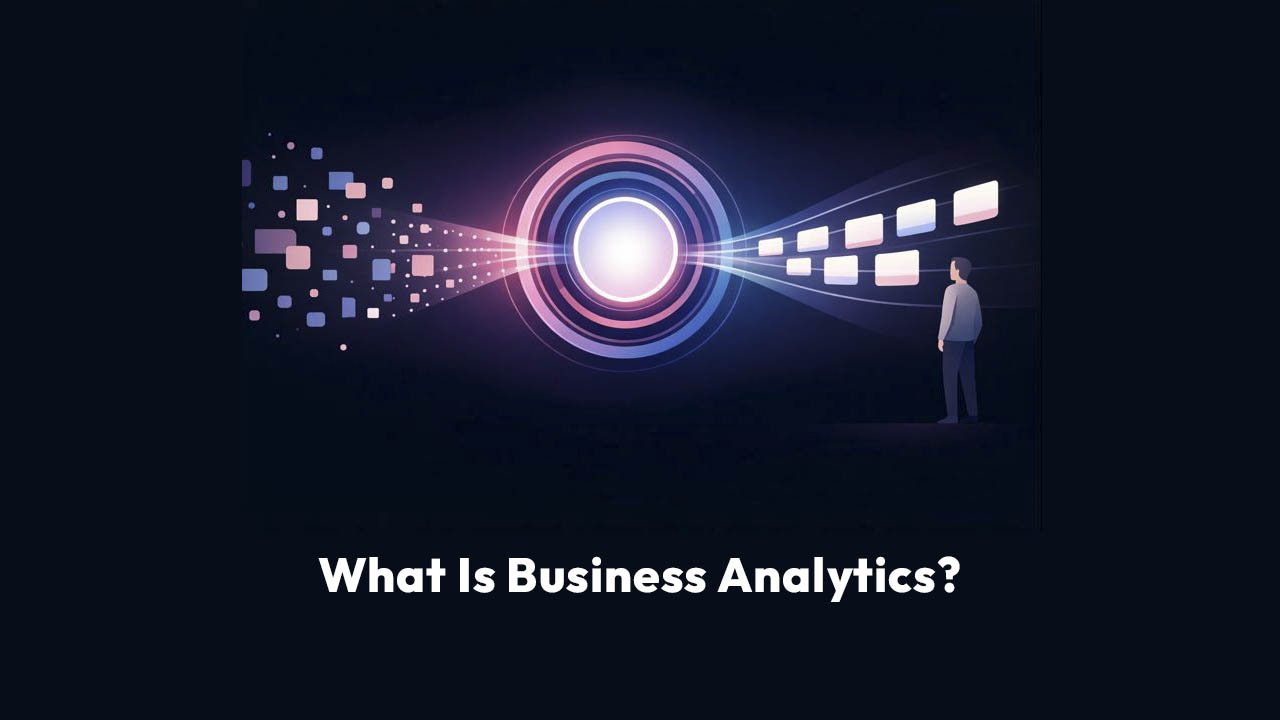A Business Leader’s Guide to Turning Information Into Impact
What is meant by data platform?
A data platform is a unified system that collects, stores, processes, and analyzes data from multiple sources so businesses can make informed decisions faster and with greater accuracy. It brings structure and visibility to the oceans of information your organization already owns—but might not yet be using to its full potential.
Why Business Leaders Should Care About Data Platforms
Let’s be honest—data has become both a lifeline and a burden for modern organizations. You’re sitting on terabytes of it. Sales figures, customer interactions, supply chain movements, marketing metrics, compliance records—the list goes on.
But here’s the kicker: most organizations use less than 30% of their available data for decision-making. The rest sits idle, buried in silos or trapped in systems that don’t talk to each other.
That’s where a data platform comes in. It turns fragmented information into a living, breathing ecosystem—one that gives you visibility, speed, and confidence in every strategic move you make.
What Is a Data Platform?
A data platform is a technology framework that integrates data collection, storage, processing, analytics, and governance into one cohesive system.
Think of it as the digital foundation that supports all your organization’s data activities—from capturing transactions in real time to generating dashboards that show performance trends. It combines software, hardware, and cloud services to unify data across departments and make it accessible for reporting, automation, and artificial intelligence (AI).
Companies like Snowflake, Databricks, BigQuery, and Couchbase all offer data platforms—each designed for slightly different needs.
Some focus on cloud scalability, others on machine learning, and others still on managing customer data.
So when someone asks, “What is an example of a data platform?” the answer could be: Snowflake for data warehousing, Splunk for real-time analytics, or MongoDB for flexible document-based data management.
How Does a Data Platform Work?
A data platform works by moving information through five essential layers—from ingestion to insight—so your teams can access the right data at the right time.
Here’s how those layers come together:
- Data Ingestion Layer:
This is where data enters the system. It might come from APIs, sensors, CRMs, ERP systems, or even social media feeds. The goal is to collect information in real time or batches and convert it into a usable format. - Data Storage Layer:
Once collected, data is stored in a secure, scalable location such as a data lake, data warehouse, or cloud database. This is the platform’s backbone—where structured and unstructured data live together. - Data Processing Layer:
This layer cleans, enriches, and transforms raw data into usable information. Think of it as the refinery that turns crude oil into jet fuel. Tools like Apache Spark, Snowflake, or Databricks operate here to prepare data for analytics or AI. - Analytics and Visualization Layer:
Here’s where business users and analysts engage. Dashboards, visualizations, and reports translate raw data into insights for strategic decisions. - Governance and Security Layer:
Behind the scenes, this ensures data is accurate, compliant, and protected. Access controls, audit trails, and encryption live here to keep regulators and executives happy alike.
IBM calls this structure a “modern data stack.” Couchbase calls it “five functional layers.” Whatever the label, the idea is the same—unify your organization’s data flow from input to action.
Why Do Businesses Need a Data Platform?
Because without one, you’re flying blind.
Organizations that rely on fragmented data often experience:
- Duplicated efforts: Multiple teams building reports from inconsistent sources.
- Slow decisions: It takes weeks to generate insights that should take minutes.
- Lost revenue: Opportunities missed because insights didn’t reach decision-makers in time.
Now imagine the opposite. With a data platform in place, you can:
- See customer behavior in real time.
- Predict demand before it spikes.
- Automate compliance reports overnight.
- Align marketing and operations with a single version of truth.
Gartner reports that companies using a centralized data platform see up to 30% faster decision-making cycles and 20% higher revenue growth from data-driven initiatives.
What Is an Example of a Data Platform in Action?
Let’s make it real.
Scenario: A national retail brand
Before using a data platform, their marketing and sales teams each had their own systems. Promotions were built on outdated spreadsheets, inventory tracking lagged by days, and customer feedback lived in an isolated CRM.
After implementing a cloud data platform—in this case, Snowflake integrated with Tableau—they connected all customer and transaction data across stores and online channels.
The result?
- Real-time dashboards showed which promotions drove sales.
- Inventory restocked automatically based on regional demand.
- Customer experience improved because every department saw the same insights.
A 15% reduction in waste and a 12% boost in repeat customers within six months.
That’s the difference between managing data and mastering it.
What Are the Types of Data Platforms?
Different business goals call for different types of data platforms. Here are four common categories every leader should know:
Each serves a purpose, but the key is integration—ensuring they work together instead of operating in silos.
What Makes a Good Data Platform?
Not all platforms are created equal. The best ones combine flexibility, scalability, and intelligence. Here’s what to look for:
- Open Architecture: Avoid vendor lock-in by choosing platforms that integrate easily with existing tools.
- AI and Automation: Look for built-in machine learning capabilities for predictive insights.
- Data Governance: Ensure compliance and security without slowing down access.
- Self-Service Analytics: Empower teams to explore and visualize data without relying on IT.
- Scalability: The system should grow with your business, not slow it down.
Pro tip:
If you’re evaluating vendors, ask them how their platform handles both structured and unstructured data. The future belongs to organizations that can unify all data types—text, images, video, and beyond.
How to Implement a Data Platform: 5 Steps for Business Leaders
- Define the Business Problem
Start with “why.” Is your goal faster reporting, better forecasting, or automated compliance? The platform should serve a specific outcome. - Audit Your Existing Systems
Identify data sources, silos, and gaps. Many organizations underestimate how fragmented their current data really is. - Choose the Right Platform Type
Select a cloud, enterprise, or hybrid model based on your team’s technical capacity and business needs. - Integrate Data Sources
Use APIs or ETL tools to connect CRMs, ERPs, eCommerce systems, and IoT feeds. Consistency is the foundation of trust. - Establish Data Governance Early
Define roles, permissions, and retention policies from day one. This prevents chaos later when data volume explodes.
FAQs About Data Platforms
What is meant by data platform vs data warehouse?
A data warehouse is a component—a place to store structured data for analytics. A data platform is the ecosystem surrounding it, including ingestion, transformation, governance, and visualization. Think of the warehouse as one room in a much larger building.
Is a data platform the same as a database?
Not exactly. A database stores information; a data platform manages how that information is collected, shared, analyzed, and governed across the enterprise.
How does AI fit into a data platform?
Modern platforms integrate AI for predictive analytics, anomaly detection, and automation. For example, Splunk uses machine learning to detect security threats in real time.
Can small businesses use data platforms?
Absolutely. Cloud-based solutions like Google BigQuery or Snowflake offer scalable pricing, making enterprise-grade analytics accessible to smaller firms.
How Do Data Platforms Improve Operational Efficiency?
When data flows freely, everything changes:
- Marketing sees real-time campaign performance.
- Finance tracks cash flow with live dashboards.
- Operations forecasts supply chain bottlenecks before they happen.
Data platforms eliminate bottlenecks by ensuring every department works from a single source of truth. Decisions move from reactive to proactive.
Example:
A logistics company using Databricks integrated IoT truck sensors with inventory data. The platform predicted route delays and dynamically rerouted deliveries—cutting transportation costs by 18%.
How Data Platforms Enable Competitive Advantage
Here’s the bottom line: the companies that thrive are the ones that turn information into insight faster than their competitors.
A well-implemented data platform gives you that edge. It’s not just about analytics—it’s about agility.
- You spot trends earlier.
- You respond to disruptions sooner.
- You deliver better customer experiences consistently.
In short, you outlearn your competition.
Conclusion
If your data lives in silos, it’s not working for you. It’s working against you.
Understanding what is meant by data platform isn’t just a technical conversation—it’s a business one. It’s about creating a foundation for every strategic decision you’ll make over the next decade.
The companies winning today aren’t necessarily bigger. They’re smarter. They’ve learned how to connect their data ecosystem—from the boardroom to the back office—to drive results.
So ask yourself: What could your team accomplish if every decision were backed by real-time, reliable data?
That’s the power—and promise—of a modern data platform.








.png)